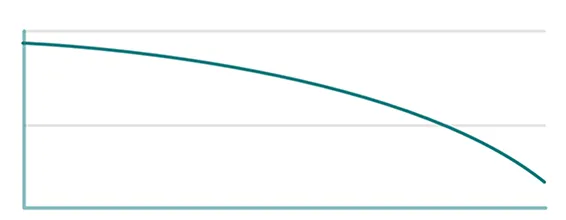chapter 02
GAAP Financial Reporting Standards and Best Practices
Get Accounting HelpGAAP financial reporting standards generally require using accrual basis accounting, which involves recognizing revenues when you earn them and expenses when you incur them. It contrasts with cash basis accounting, where you recognize revenues when you collect them and expenses when you pay them.


In line with GAAP’s mandate, accrual basis provides a more accurate and complete picture of your financial position and performance.
It matches activities to the periods they occur in, instead of when cash changes hands,
which enhances the usefulness of your financial statements.
To implement accrual basis accounting, there are essential financial reporting
standards. These include transactions and activities that affect revenue, expense,
asset, liability and equity accounts.
Revenue Recognition
GAAP revenue recognition standards primarily guide how to determine when you earn revenues and how to report them on financial statements. The current standard, ASC 606 , involves recognizing revenue as you fulfill each obligation made to your customers—whether it’s delivering goods or providing services. It includes a five-step framework:
-
Identify the contract with a customer.
-
Identify the contract’s performance obligations.
-
Determine the transaction price.
-
Assign the transaction price to the performance obligations in the contract.
-
Recognize revenue as you satisfy each performance obligation
Expense Recognition
GAAP expense recognition standards primarily guide how to determine when you incur
business expenses and how to claim them on financial statements. There are many more
types of expenses than revenues, so there’s no single ASC section for expense
recognition. Instead, different expense categories follow distinct financial reporting standards and ASC guidance.
Here’s an overview of a few expense types and their relevant ASC sections and guidance:
Other Expenses – Advertising
ASC SECTION
Section 720-35
GUIDANCE
Deduct the costs to create your advertisement during the production process,
rather than when the advertising takes place.
Deduct the cost of communicating your advertising the first time the
advertisement takes place.
Research and Development (R&D)
ASC SECTION
Section 730
GUIDANCE
Generally, recognize R&D costs as soon as they’re incurred, as you can’t
measure future economic benefits with certainty.
R&D expenses with an alternative future use, such as to acquire equipment or
facilities, may be capitalizable as an asset.
Income Taxes
ASC SECTION
Section 740
GUIDANCE
Recognize estimated taxes payable or refundable on tax returns for the
current year as a liability or asset.
Recognize a deferred tax liability or asset for the estimated future tax
effects of temporary differences and carryforwards.
Asset Valuation and Depreciation
GAAP asset standards largely revolve around valuation and depreciation methods, which determine how you calculate your assets’ worth on the balance sheet and how you deduct their costs over time. There are three valuation methods. The most suitable often depends on the asset type.
-
Market Approach
Assigns fair market value based on prices and other relevant information from transactions involving identical or similar sets of assets.
BEST FOR When information on comparable assets is readily available (e.g., to value real estate based on recent sale prices of similar properties nearby). -
Income Approach
Assigns value to an asset using discounted cash flow analysis (DCF), which converts the cash flows you expect an asset to generate into a single present value.
BEST FOR When an asset isn’t actively traded, but you can make informed estimates about the future cash flows it may generate and their relative risk (e.g., to value intangible assets and businesses). -
Cost Approach
Assigns value to an asset based on the cost to replace it with a substitute of comparable utility, adjusted for obsolescence like physical deterioration.
BEST FOR When an asset can easily be replaced with a substitute of comparable utility (e.g., to value property and equipment).
U.S. GAAP financial reporting standards also include three depreciation methods:
01Straight-line method

DEDUCTIONS OVER TIME
The simplest and most common method. Straight-line spreads the cost of an asset evenly over its useful life.
02Accelerated methods

DEDUCTIONS OVER TIME
Consists of the declining-balance and sum-of-the-years-digits methods. This approach concentrates deductions in the earlier years of an asset’s useful life.
03Units of production method

DEDUCTIONS OVER TIME
Deducts depreciation costs in accordance with an asset’s measurable output. It’s suitable when an asset’s usage varies significantly between periods.
Liability Accruals
A liability is something you owe that will likely require you to pay cash, provide goods or deliver services in the future. GAAP liability standards primarily guide how and when you should recognize these obligations on financial statements. Liability topics are highly diverse and the guidance can be quite complex, but the fundamental concepts of accrual accounting consistently apply. When you incur an obligation, you generally must accrue a liability to reflect it. Notable examples of GAAP guidance for two types of liabilities include:
| Liability | Definition | Guidance |
|---|---|---|
|
Loss Contingencies |
A potential future expense, such as a pending lawsuit or the risk that your property will be damaged by fire |
ASC 440: Once a loss is likely to occur and you can reasonably estimate the amount, record it as a liability on your balance sheet. |
|
Asset Retirement Obligations (ARO) |
A legal obligation to retire a fixed asset, such as a requirement to remove all leasehold improvements at the end of your lease term |
ASC 410: Once the legal obligation is in effect, recognize a liability on the balance sheet for the present value of the cost to retire your fixed asset. |
| Liability | Definition | Guidance |
|---|---|---|
|
Loss Contingencies |
A potential future expense, such as a pending lawsuit or the risk that your property will be damaged by fire. |
ASC 440: Once a loss is likely to occur and you can reasonably estimate the amount, record it as a liability on your balance sheet. |
|
Asset Retirement Obligations (ARO) |
A legal obligation to retire a fixed asset, such as a requirement to remove all leasehold improvements at the end of your lease term. |
ASC 410: Once the legal obligation is in effect, recognize a liability on the balance sheet for the present value of the cost to retire your fixed asset. |
Equity Transactions
Equity is the difference between your company’s assets and liabilities. In other words, it reflects the net value of the business to its owners. Components include common stock, retained earnings and additional paid-in capital. GAAP equity standards provide guidance on recording elements of transactions, accounts and financial instruments involving these components. Like the liability standards, ASC 505 – Equity covers a variety of complex topics, but some notable examples include:
| Topic | Definition | Guidance |
|---|---|---|
|
Stock Dividends |
A dividend payment to shareholders in the form of shares rather than cash |
Transfer an amount equal to the fair value of the shares issued in the dividend from retained earnings to capital stock and additional paid-in capital. |
|
Treasury Stock Acquisition |
Repurchasing shares of your own company’s common stock |
Recognize a contra-equity account that reduces shareholders’ equity by the amount you paid to repurchase your shares. |
| Topic | Definition | Guidance |
|---|---|---|
|
Stock Dividends |
A dividend payment to shareholders in the form of shares rather than cash |
A dividend payment to shareholders in the form of shares rather than cash |
|
Treasury Stock Acquisition |
Repurchasing shares of your own company’s common stock |
Recognize a contra-equity account that reduces shareholders’ equity by the amount you paid to repurchase your shares. |
Financial Reporting Standards for the Presentation of Financial Statements and Notes
In addition to outlining practices for recording accounts under the accrual basis, the ASC also provides guidance on how to present your financial statements and what to disclose in the accompanying notes to maximize their usefulness.
-
Comparative financial statements
You must provide financial statements for multiple accounting periods to help users compare your company’s financial performance and position over time. -
Discontinued operations
You must record entity components and activities as discontinued when they are disposed of or qualify as held for sale. -
Liquidation basis of accounting
You must use the liquidation basis when liquidation is imminent. That means a plan for converting your assets to cash and settling all obligations is approved or imposed in anticipation of business closure.
-
Accounting policies
Explain which accounting policies your company follows, such as your specific methods for depreciation and inventory valuation. -
Contingencies
Disclose reasonably possible losses from uncertain future events, such as pending litigation or the threat of expropriation. -
Related party transactions
Disclaim any transactions with related parties that affect financial statements, such as transactions with individuals—or their close family members—with control, joint control or significant influence over the entity. -
Subsequent events
Detail notable events that occur after the balance sheet date but before you publish your financial statements.